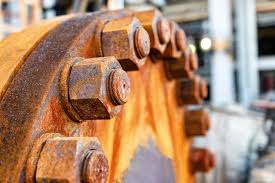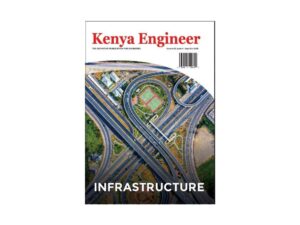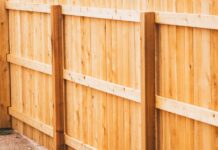Last Updated 2 weeks ago by Kenya Engineer
It is not uncommon for facility owners to get into a quandary when trying to determine the least expensive way to protect a structure for a nominated period. Corrosion Prevention methods are considered in terms of money required for implementation and upkeep for the period of protection. In the first instance expected performance and cost for annual expenditure needs to be determined. Assuming the projected life of an initial coating system can be arrived at, other factors such as: paint material, application/installation cost, future maintenance, replacement cost, inflation, and cash flow need to be considered.
The Corrosion Engineer or the Evaluating Authority when faced with a decision between alternate methods come to realize that it is the time component, for a given period that tends to complicate the issue. The longer the required period, the more uncertain the decision becomes. For example, should an inexpensive coating system be used maintained and replaced as required or allocate more money initially to minimize maintenance expenditure in future years.
Corrosion Protection like other facets of a business are matters of economics, this aspect can be analyzed taking into consideration initial cost, upkeep over a projected period, concepts of payback period, time to recoup expenditure, and annual rate of return on investment. These are some of the matters used to decide the most appropriate method of protection. One factor overlooked in many cases is the timing of cash flow requirements.
Money invested today will earn interest at a given rate and will increase by the amount of interest added; this concept allows for comparisons between alternate systems in techniques such as Present Value Analysis and Discounted Cash Flow. These methods of comparison are based on a simple method of convention. If present day costs for corrosion protection are known and we assume it will cost the same, say in 10 years, how much money would have to be put into a bank investment initially so that in 10 years the original investment plus interest equaled the money required for protection?
The answer depends on the rate of which the interest is earned over that period. (Table 1) shows several examples of the same initial investment over a 10-year period with varying interest rates.
Table 1 – COMPARISON OF INTEREST EARNING RATES OVER 10 YEARS
| $
Initial Investment |
%
Compound Interest Rates |
Interest Earned | Final Sum Including Original Investment |
| 10,000 | 2 | 2200.00 | 12,200.00 |
| 10,000 | 5 | 6470.00 | 16,470.00 |
| 10,000 | 8 | 12,196.00 | 22,196.00 |
| 10,000 | 10 | 17,070.00 | 27,070.00 |
In the last row, $10,000.00 invested at 10% will earn $17,070.00 in interest, the sum in the bank will be $27,070.00, more than enough for the original paint job and even to pocket the original $10,000.00 invested. The $27,070.00 is termed the ‘Future value’ and conversely the $10,000.00 is called ‘Present value’. This simple convention allows the analysis of complex investment decisions, such as determining the least expensive way of protecting a structure for a set period. The future estimated cost of painting operations are converted to present day values, thereby providing a comparison between alternate systems which may carried out by comparing respective present day values. Present value is the sum that must be invested at a specific interest rate to ensure that there is enough money in the bank at the future date to carry out the painting. The alternative with the lowest present value is the most economical proposal over the period being considered.
Table 2 – Illustrates a simple example based on deferred payment plan expenditure is shown as negative i.e. money flowing out.
CASH FLOW CALCULATIONS FOR TWO ALTERNATE COURSES OF ACTION
| Alternate 1 | Lump Sum Payment | ||||
| Year | $
Initial Investment |
$ Deferred Maintenance Payment | $
Total |
Factor @ 10% | $
Present Value |
| 0 | -10,000 | -10,000 | $1.00 | -10,000 | |
| 1 | |||||
| 2 | |||||
| 3 | |||||
| 4 | |||||
| 5 | Total -$10,000 | ||||
| Alternate 2 | Deferred Payment Plan | ||||
| Year | $
Initial Investment |
$ Deferred Maintenance Payment | $
Total |
Factor @ 10% | $
Present Value |
| 0 | -8,000 | – 8,000 | $1.00 | -8,000 | |
| 1 | |||||
| 2 | |||||
| 3 | -2,000 | -2,000 | 0.75 | -1500 | |
| 4 | |||||
| 5 | Total -$9,500 | ||||
Alternate 2 is the least expensive, the factor to convert present day value was based on an earning rate of 10% compound interest over three years.
Where the deferred payment option is equalized say over 5 years as illustrated in Table 3, the savings are considerably larger and would for example include further savings in terms of investment allowances (if applicable), tax benefits, depreciation and cash flow predictability.
One alternate method for capital investment associated with corrosion protection is to consider the concept of a maintenance program which may include a low-cost coating system or deferred topcoat application where payments are spread equally over a contracted period. Maintenance to a large degree at some point will be necessary therefore low-cost materials or deferring a topcoat becomes a matter of choice.
The conventional arrangement for painting is to pay a lump sum on completion for a one-off paint job then repeat the exercise when deterioration has occurred to an unacceptable level. In addition to the initial work, it is often necessary to pay periodically for minor repairs. On the other hand, with a planned maintenance program, the client can have all the comprehensive work done, enjoy regular maintenance throughout the contract period and spread the known costs over numerous years.
This type of arrangement allows the facility owner to budget more effectively as they do not have to pay large initial lump sums and know in advance what their yearly expenditure will be, with only minor adjustments in accordance with increases in costs of labor and materials. Accordingly accounting is vastly simplified as the client only receives one invoice per year. Another benefit to the client is that it relieves the payment of large lump sums which in turn reduces the capital outlay and allows money to be used for other purposes within the business or for further expansion.
A deferred payment plan is a significant departure from the conventional ad hoc approach to maintenance painting. It will ensure that the facility will be kept in sound condition and not left to deteriorate to an unsatisfactory level, where extensive reinstatement becomes necessary. Because the coating system is maintained on an annual basis, any minor breakdown can be rectified by sectional repair at the next annual service. Regular maintenance thus ensures that the coating system serves its function in providing a good appearance and structural stability over the projected period. In this way the true life expectancy of the coating system is therefore achieved.
This type of approach relieves the client of time, cost and risk burdens associated with in- house major construction and maintenance requirements. The traditional method has been for organizations to employ their own personnel or independent consultants to carry out a status report to determine the condition of the facility and formulate a Scope of Work. They must evaluate various recommendations to determine the most appropriate protective coating system; and are required to draw up comprehensive tender documents, pre-qualify tenderers to determine their capacity to handle the work, evaluate tenders and award the contract. They must administer detailed supervision to ensure the work is carried out in accordance with the tender document, and finally, they have to carry the risks associated with the long term performance of the applied coating system.
Alternatively, the coating applicator in conjunction with the paint supplier, determine the specification and administers the program, maintaining the coatings system for the duration of the contract period taking full responsibility for continuing performance. However, prior to commencement any proposed paint system should be independently verified for performance by recognized material engineer.
Maintenance or general painting requires a disciplined approach if available finances and labour are to be utilized to best advantage. A program should be formulated to maintain and reinstate any failed areas to maximize efficiency to prevent premature breakdown and possible loss of load-bearing capacity. To protect individual sections in a non-systematic manner inevitably leads to confusion in the long term, as well as adding difficulty to the function of inspection and supervision.
The entire program should preferably be under the control of a nominated, individual or painting contractor, any non-systematic approach should be avoided for all the obvious reasons. A coordinated approach ensures that all monies spent is cost effective in relation to the long-term objectives. The cost of shutdowns due to unforeseen failures should also be considered; these are hidden costs as only one enforced shutdown due to coating failure would more than compensate for any difference between a planned program, to a non-systematic approach on an as-needed basis.
This type of approach enables the principal to achieve maximum value for all money spent on construction and maintenance. The property asset value is enhanced, since the condition of the structure can be reviewed and maintained in accordance with a carefully tailored program. All work undertaken can and should be comprehensively guaranteed against premature failure so the principal does not carry any financial risk should the coating system fail.
It is in the painting contractor’s, coating supplier best interest to ensure that the system is kept in good condition throughout the contracted period as this reduces the yearly workload; it also relieves the principal of the considerable expense of hidden costs and effort involved in detailed contract supervision.
It is also important that these arrangements place no obligation on the principal to continue with the program should the circumstances change for any reason; the principal should be able to terminate the agreement without penalty, just by paying any difference which may exist between value of work undertaken to monies paid at the time of termination, or any separate agreement to the contracting parties.
Payment should be spread annually over the duration of the contract (a rise and fall clause based on labour and material costs provides for indexation of each year’s payment). The distinct advantage of this, deferred payment system is that it enables the principal to budget the cash flow more accurately by eliminating the fluctuating payments which would be involved if work was invoiced on an ad hoc basis.
A typical example of an actual program based on new construction in value terms is illustrated in Table3
Programs of this nature will in effect maximize the total funds invested, not only plant and equipment but also possible revenue loss due to unforeseen related shutdowns. It does represent a very cost-efficient approach to the solution of maintenance and construction painting.
Table 3
| Outstanding
Value |
Interest | Total
Outstanding |
Less
Payments |
Outstanding | ||
| On Completion | 7,000,000 | – | 7,000,000 | 1,500,000 | 5,500,000 | |
| Year 1 | 5,500,000 | 550,000 | 6,050,000 | 1,500,000 | 4,550,000 | |
| Year 2 | 4,550,000 | 455,000 | 5,005,000 | 1,500,000 | 3.505.000 | |
| Year 3 | 3,505,000 | 350,500 | 3,855,500 | 1,500,000 | 2,355,500 | |
| Year 4 | 2,355,500 | 235,550 | 2,591,000 | 1,500,000 | 1,091,000 | |
| Year 5 | 1,091,000 | 109,100 | 1,200,100 | 1,200,100 | nil | |
| 1,700,100 | 7,200,100 | |||||
|
Contract Value $ 7,000,000 Interest Paid $ 1,700,100 $ 8,700,100 (*projected total contract cost to client)
Less Payments on years 1-5 totaling $ 7,200,100 expensed each year as maintenance against general revenue (if applicable.)
|
||||||
Table 3 – EXAMPLE DEFERRED PAYMENT PLAN
The example takes into consideration the total cost of the protective system and includes the maintenance component over a five-year contract period.
The Premise: Calculation of delayed payment over 5 years with first payment on completion, followed by equal yearly payments. For simplicity
Interest is calculated at 10% (would be subject to prevailing market rates
The above example is typical only, based on new construction; however, there are circumstances.
where the tax implication may or may not be applicable. The advantage is that the initial payment of $1.5M is capitalized which is subject to yearly depreciation. The remaining payments expensed each year as maintenance write-off costs. However this premise would need to be researched by an appropriate taxation consultant.
The effects of inflation can be significant and difficult to determine, this also applies to interest rates on earnings which are not fixed either, particularly if the economic conditions are volatile. Whilst inflation is unknown cash flow, predictability can be calculated.
Inflation will increase the amount of money necessary to perform an operation in the future; therefore it is imperative to choose the best possible present paint system available to cover future costs. Choosing a low quality system is not worth considering when one considers that the cost of paint protection for new construction only represents 1-2% of the total cost of construction. For existing facilities, the paint cost is somewhat typically higher, however, still not enough to consider lower quality materials.
To summarize, cash flow analysis is based on a simple principle i.e. any future sum required may be generated by making a smaller investment today and earning interest up to the future date, by taking the sum of present day investments, a total sum for protection over the contracted period may be determined.
A painting program where practical with deferred payments is a tangible way of ensuring a project receives the best, longest protection available with the added benefit of cash flow predictability. It is a win situation for all those concerned, facility owner, painting contractor, paint supplier, and to some degree a prospective buyer, should the facility be sold at some future date.

























